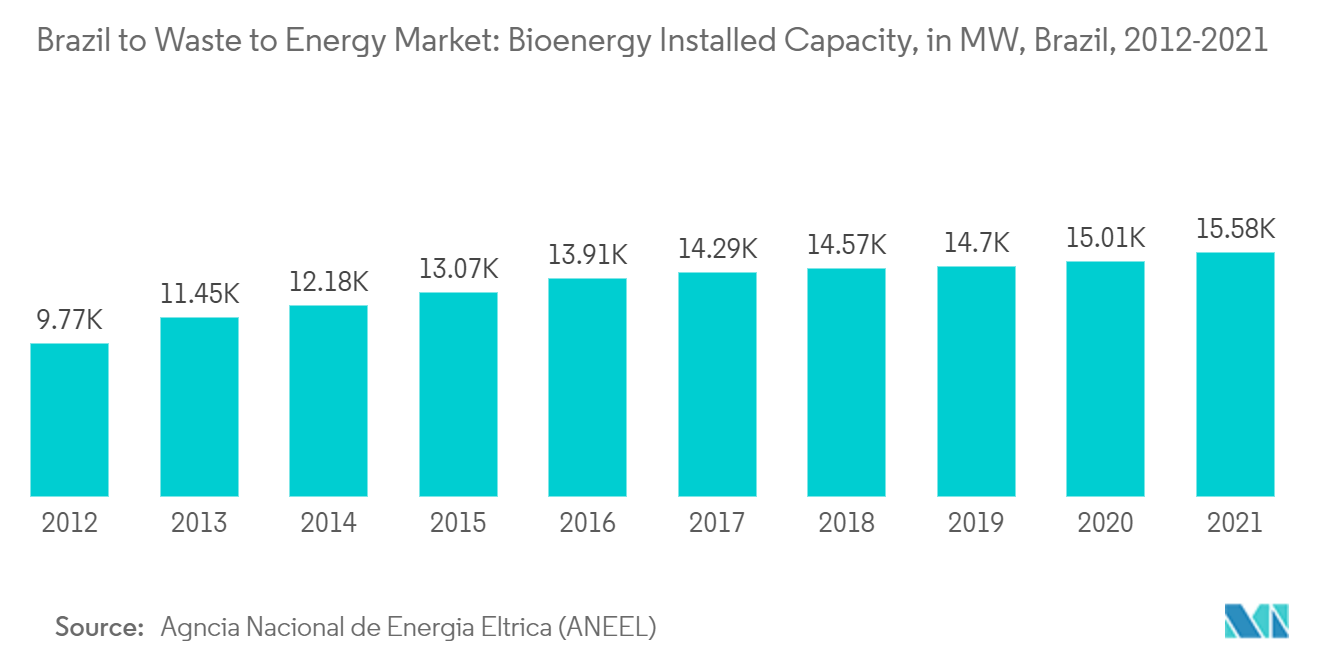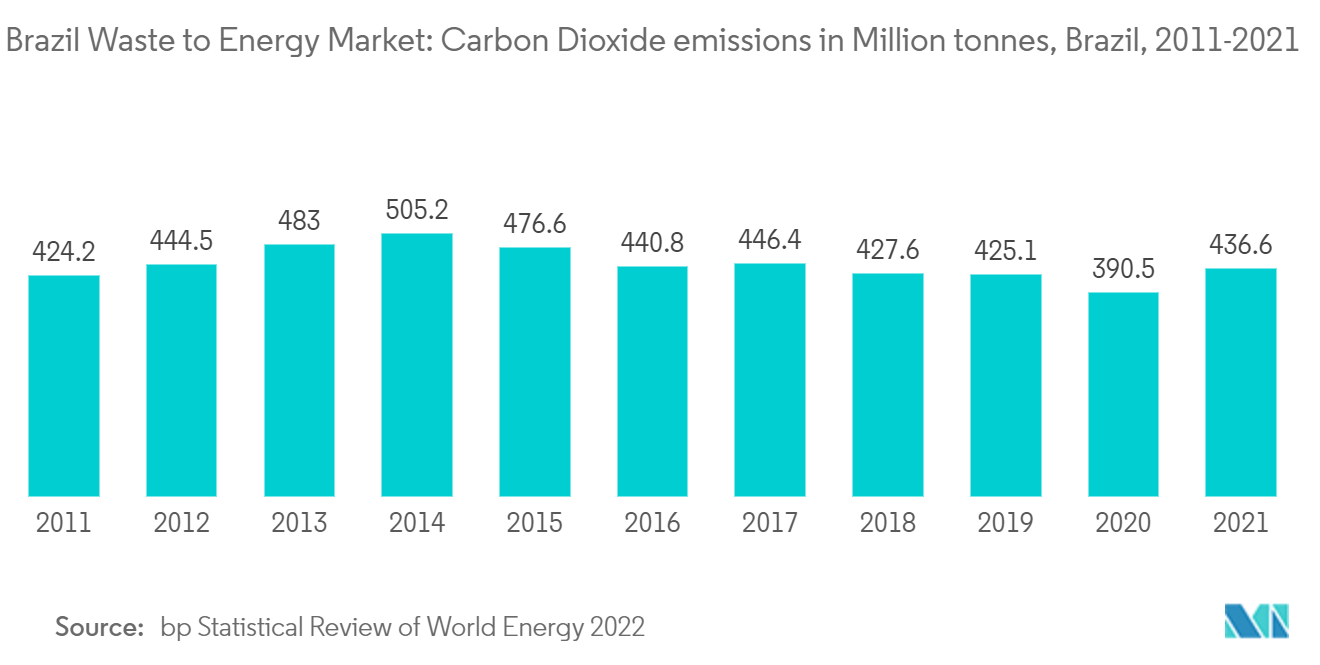Market Trends of Brazil Waste to Energy Industry
This section covers the major market trends shaping the Brazil Waste-to-Energy Market according to our research experts:
Thermal Based Waste to Energy Conversion is Expected to Witness a Significant Growth
- The number of waste incineration plants is witnessing significant growth over the years due to the substantial increase in waste generation and as landfills exceed capacity.
- The generation of solid waste in Brazil has been rising over the years. In Brazil, 82.66 million tons of municipal solid waste were produced in 2021. Estimates based on the time series showed that Brazil is expected to reach a generation of 100 million metric tons a year around 2030.
- Waste-to-energy projects have huge potential in Brazil. Private sector firms in Brazil launched a waste-to-energy association known as Abren, a Brazilian representative of the world's largest solid waste management institution.
- In 2020, the Brazilian Association for the Recovery of Waste Energy (ABREN) estimated that using an average lower heat value (LHV) of 7,500 kJ/kg, a 28% energy recovery plant with an annual availability of 8,000 hours, there may be a potential for generating 19 TWh of electricity from MSW per year, which is equivalent to an installed capacity of 2,358 MW in the 28 metropolitan regions of the country.
- In October 2021, Veolia began producing renewable electricity through the valorization of biogas on its landfill sites in Brazil. In three of the company's sanitary landfills in Brazil, the company has established three new thermoelectric power plants. The units produce 12,400 kW (12.4 MW) of renewable electricity from biogas generated by the decomposition of organic waste, which is required to meet the energy needs of approximately 42,000 residents.
- In 2021, the installed capacity of bioenergy was 15,578.4 MW. Bioenergy uses biomass, i.e., solid waste, to produce energy.
- Therefore, owing to the aforementioned factors, the thermal segment is likely to dominate the Brazil waste-to-energy market during the forecast period.

Environmental and Social Impact of Waste to Energy Incineration Plants
- WTE plants reduce volumes of waste. However, they do not produce clean energy and have a large carbon footprint. Brazil is already one of the largest producers of greenhouse emissions globally. Carbon dioxide emissions in Brazil amounted to 436.6 million tons in 2021. Due to the immediate effects of global warming and climate change plaguing the region, environmental and social issues have gained prime importance, which, in turn, is expected to hinder the growth of Brazil's waste-to-energy market growth.
- Though modern "environmentally-friendly" WTE incineration technologies and ultra-high temperature furnaces ensure that harmful byproducts such as dioxins do not form and filters can prevent pollutants from being released into the air, the burning process still produces fumes that contribute to climate change, and the electricity generated by waste incineration has been shown to have significantly higher greenhouse emissions than electricity generated through conventional means, such as natural gas.
- Moreover, small plants might cause more pollution as they do not have the same environmental protection systems as larger plants. This leads to higher toxic emissions and ash production, which needs to be disposed of properly. Disposing bottom ash and fly ash from incinerators into landfills remains a severe environmental issue due to the presence of 8-12% ferrous metals and 0.5-1.5% non-ferrous metals in such ash.
- Large-scale WTE incineration plants also threaten the livelihood of millions of waste-pickers in the region, part of the region's massive informal waste management sector. These waste-pickers collect and recycle plastics, metal, and cardboard. They play a crucial role in municipal solid waste management, contributing to a large trade in recycling waste products. Incineration plants would kill the livelihood of millions of such people and reduce the level of segregation in waste and reduce recycling.
- Due to this, it has been a controversial technology. It has been a source of significant protests by environmental activists globally, from the United States to China, and WtE plants in Brazil have faced similar protests earlier.
- In July 2021, a protest in 20 cities in the Minas Gerais region of Brazil brought together environmentalists, waste pickers, and recyclers to condemn garbage incineration in a day of struggle against a government notice initiating the route for incineration of garbage for consortia of municipalities in Minas Gerais.
- Hence, such environmental and social issues are expected to significantly restrain the growth of Brazil's Waste to Energy market during the forecast period.

